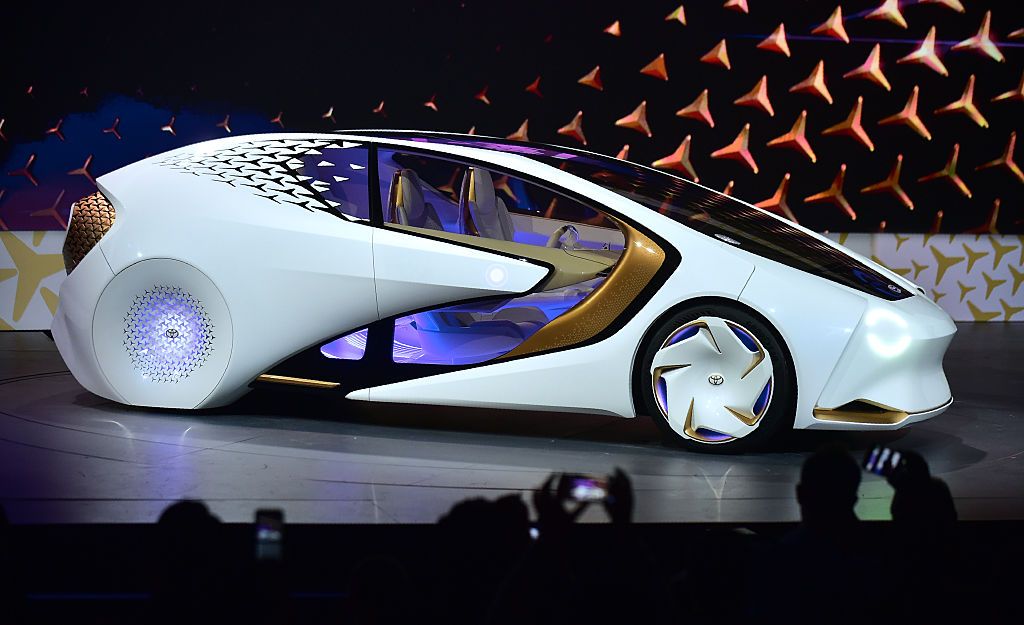Some concept cars are pure fantasies intended to keep styling staff juices flowing. Back in the 1950s, they were appropriately called "dream cars." In recent decades, many concept cars displayed on the auto show circuit are thinly disguised versions of cars due to be marketed in another year or two. One reason for their existence is to condition the buying public to new design features. Another might be to get the buying public's negative reactions to details that might be easily modified in the months before introduction of the production car.
Currently, both concept cars and production cars usually are, in my opinion, overly-decorated in terms of both body sculpting and angular, sometimes spikey shapes for grilles, headlight and tail light assemblies, and even window profiles. With all that happening, sometimes it can be difficult to evaluate differences between the styling of a concept car and the production car it is intended to "predict."
Back in the late 1990s, General Motors' styling emphasized shape rather than ornamentation. Because of this comparative (to present times) simplicity, I though it might be interesting to examine the Oldsmobile Alero, introduced for 1998 and how it differed from the 1997 Alero Alpha concept car that previewed it.
A 1998 Oldsmobile Alero coupe.
Side view of the Alpha. Although it differs from the Alero in every detail -- especially note the front overhang -- the two designs are clearly related in spirit. Examples include the side window shapes, the trunk area's relationship to the curve of the top, the side parts of the tail lights, and the sense of the fender line (despite the Alpha's stubbier nose).
Alero front end treatment.
Here the Alpha is much closer to the production Alero. Details of the hood cut, the headlight assembly outline, the shapes of the three openings below the bumper strike panel, the strike panel itself -- all differ, but not greatly.
This frontal theme was already in place for Oldsmobile in the form of its Aurora sedan introduced in the spring of 1994.
In turn, the Aurora's front design evolved from a 1989 concept called the Tube Car.
Rear 3/4 view of a 2000 Alero.
The Alpha's rear design is close to that of the production car above the bumper -- note the shapes of the tail lights and license plate zone. Sub-bumper styling differs considerably. For what it's worth the Alpha's gas cap is on the left side, whereas the Alero's is one the right.
Some concept cars are pure fantasies intended to keep styling staff juices flowing. Back in the 1950s, they were appropriately called "dream cars." In recent decades, many concept cars displayed on the auto show circuit are thinly disguised versions of cars due to be marketed in another year or two. One reason for their existence is to condition the buying public to new design features. Another might be to get the buying public's negative reactions to details that might be easily modified in the months before introduction of the production car.
Currently, both concept cars and production cars usually are, in my opinion, overly-decorated in terms of both body sculpting and angular, sometimes spikey shapes for grilles, headlight and tail light assemblies, and even window profiles. With all that happening, sometimes it can be difficult to evaluate differences between the styling of a concept car and the production car it is intended to "predict."
Back in the late 1990s, General Motors' styling emphasized shape rather than ornamentation. Because of this comparative (to present times) simplicity, I though it might be interesting to examine the Oldsmobile Alero, introduced for 1998 and how it differed from the 1997 Alero Alpha concept car that previewed it.
A 1998 Oldsmobile Alero coupe.
Side view of the Alpha. Although it differs from the Alero in every detail -- especially note the front overhang -- the two designs are clearly related in spirit. Examples include the side window shapes, the trunk area's relationship to the curve of the top, the side parts of the tail lights, and the sense of the fender line (despite the Alpha's stubbier nose).
Alero front end treatment.
Here the Alpha is much closer to the production Alero. Details of the hood cut, the headlight assembly outline, the shapes of the three openings below the bumper strike panel, the strike panel itself -- all differ, but not greatly.
This frontal theme was already in place for Oldsmobile in the form of its Aurora sedan introduced in the spring of 1994.
In turn, the Aurora's front design evolved from a 1989 concept called the Tube Car.
Rear 3/4 view of a 2000 Alero.
The Alpha's rear design is close to that of the production car above the bumper -- note the shapes of the tail lights and license plate zone. Sub-bumper styling differs considerably. For what it's worth the Alpha's gas cap is on the left side, whereas the Alero's is one the right.




















EmoticonEmoticon